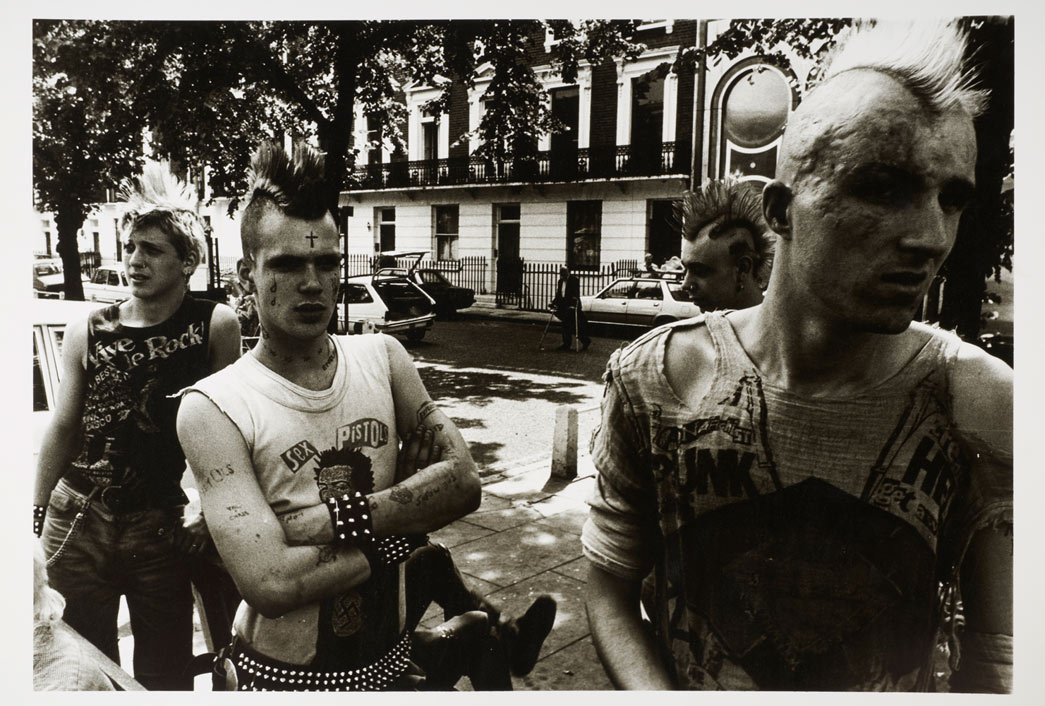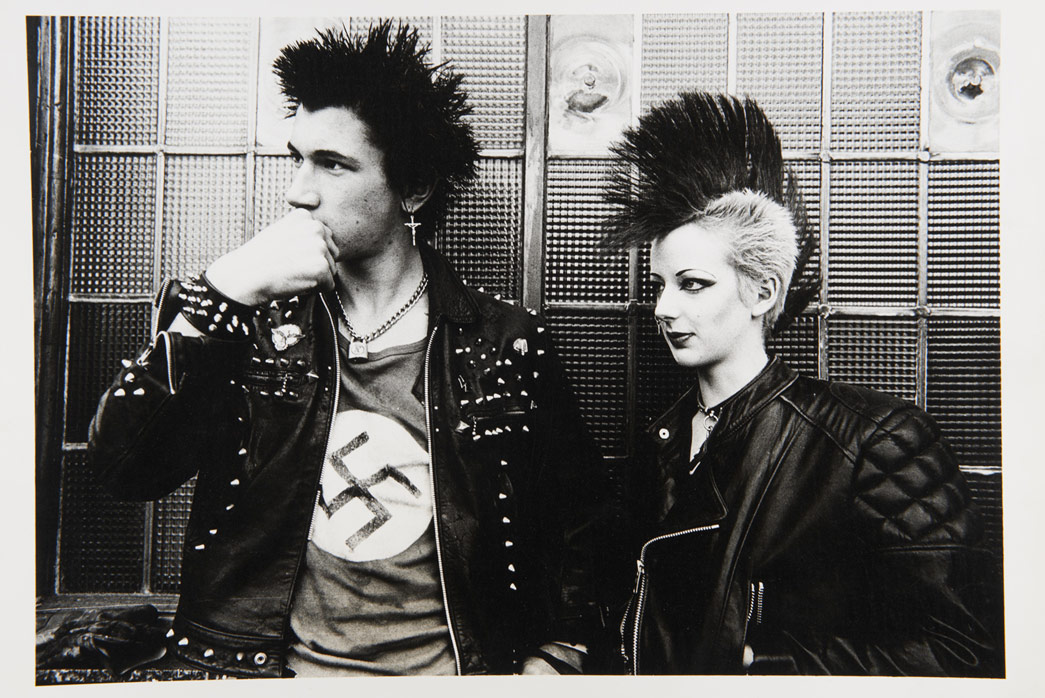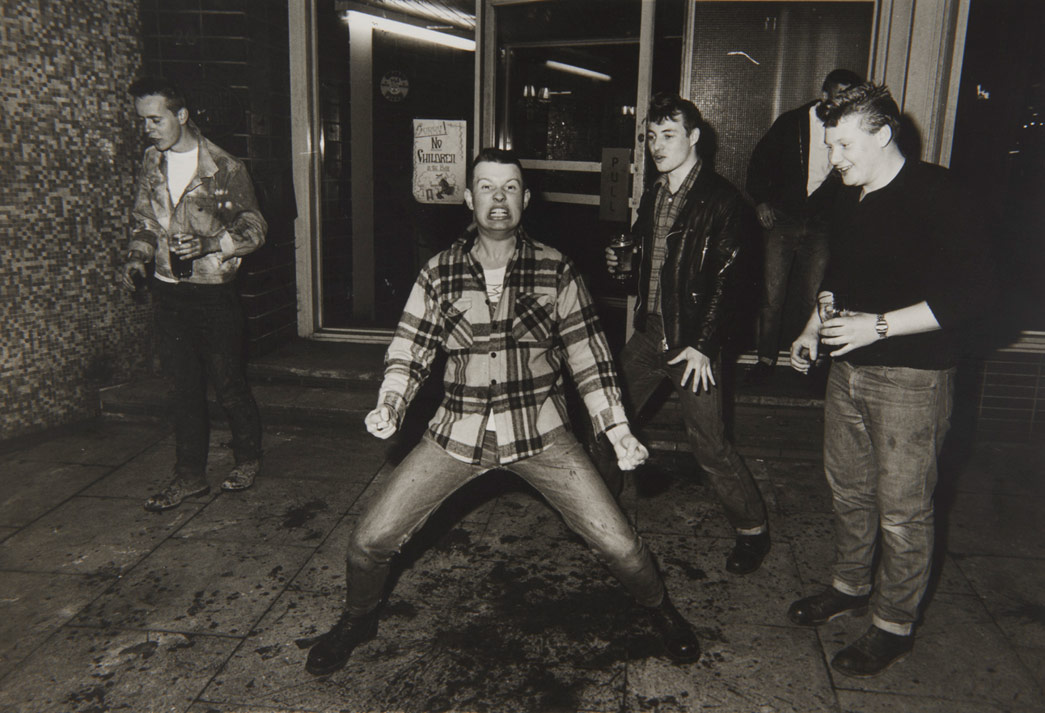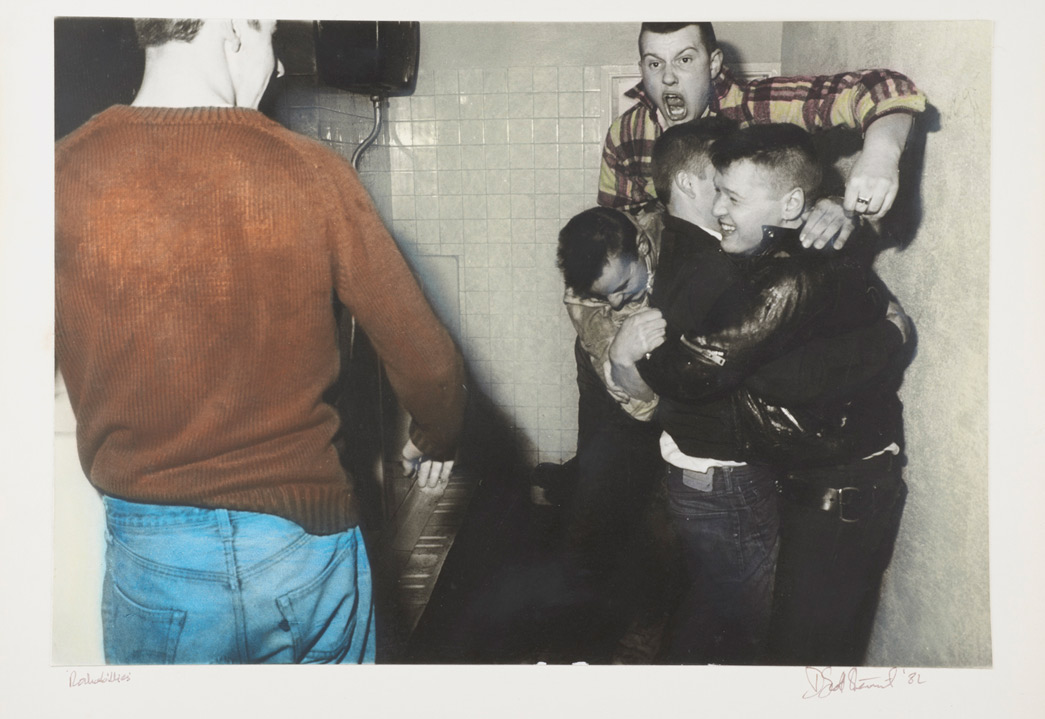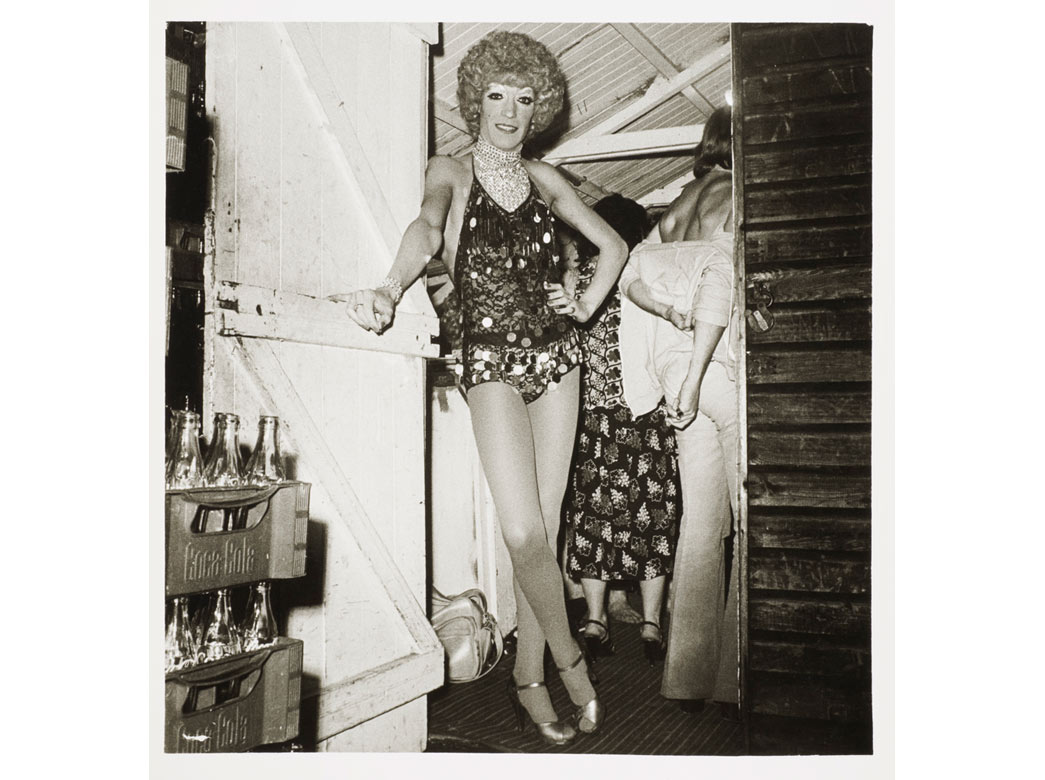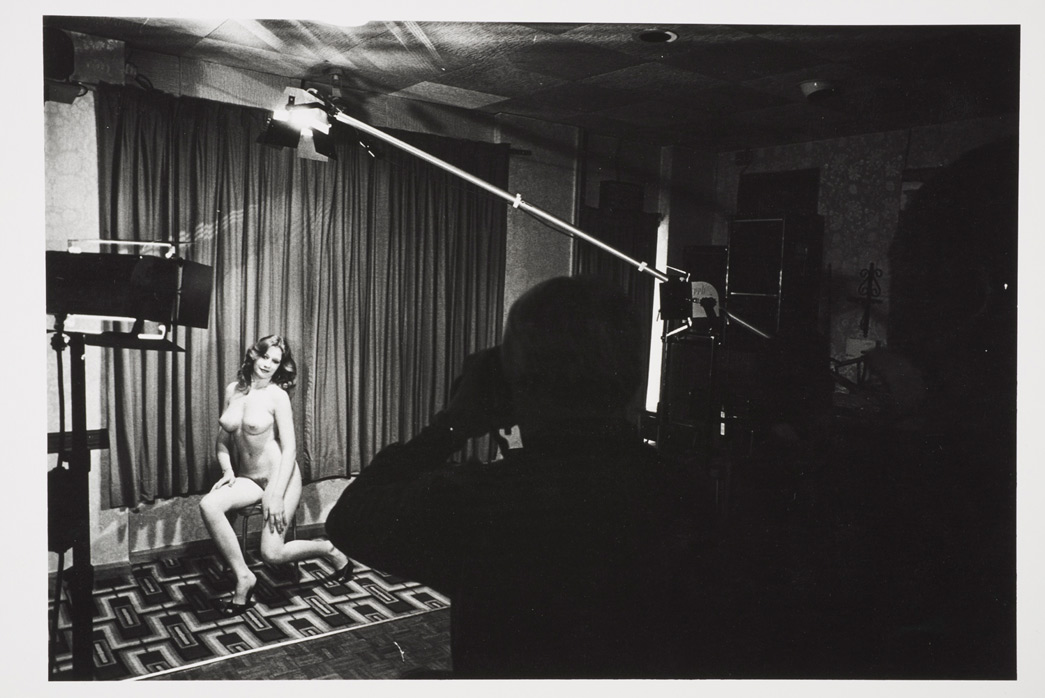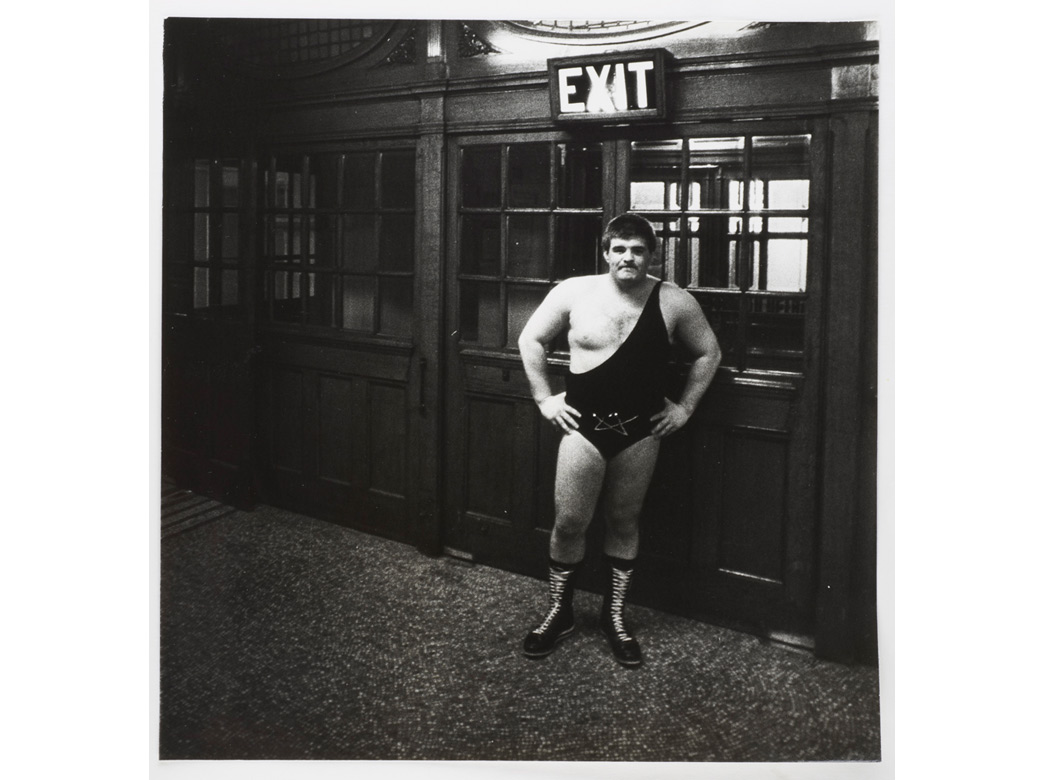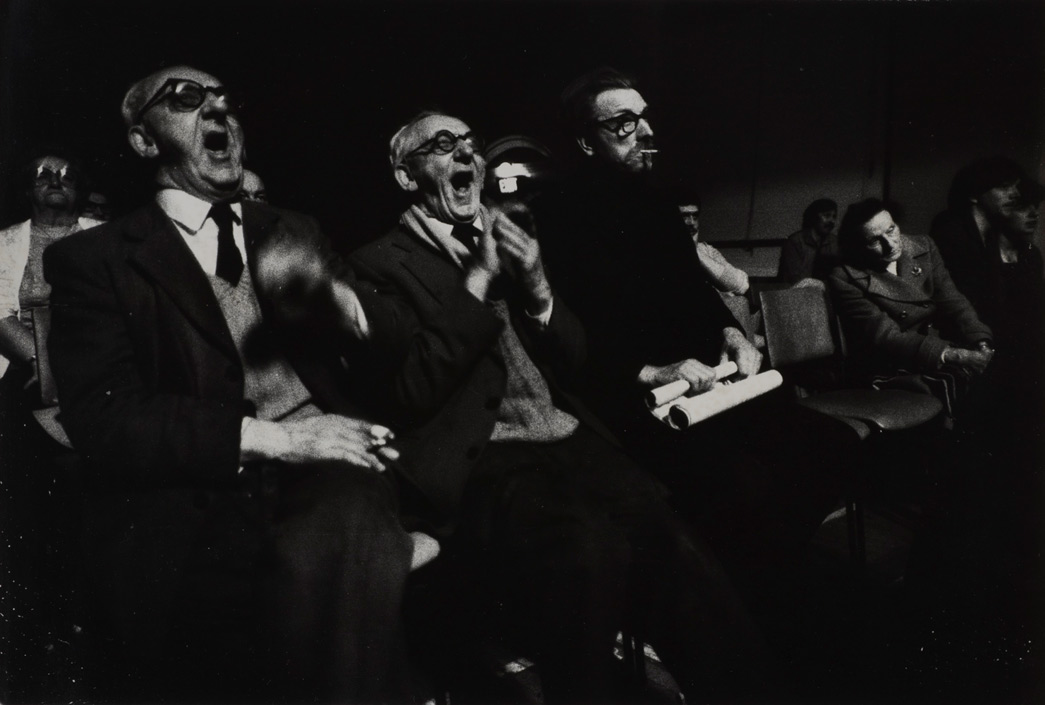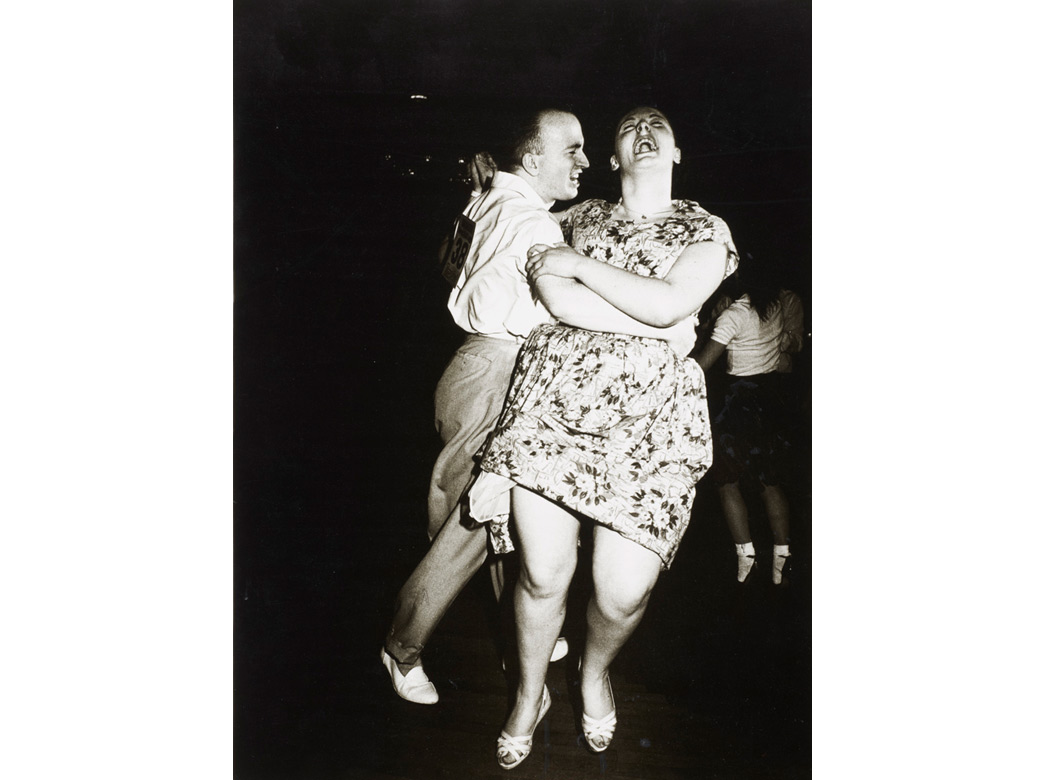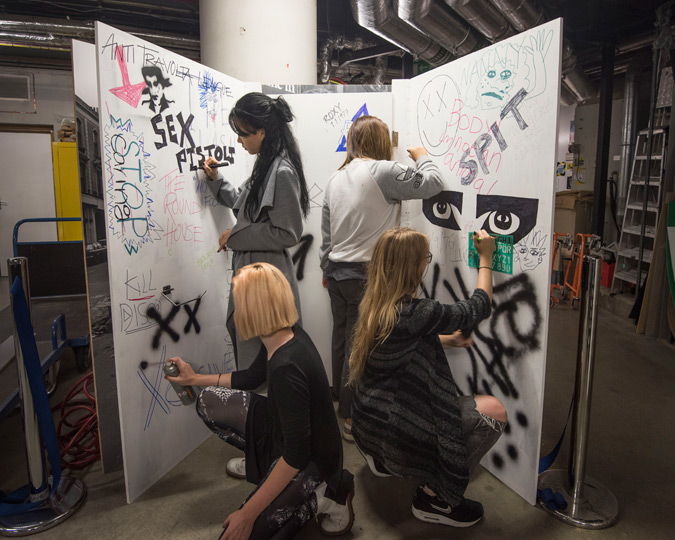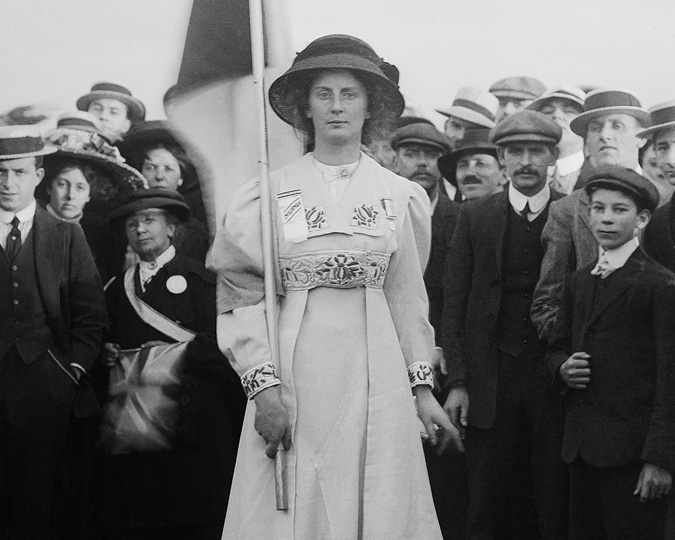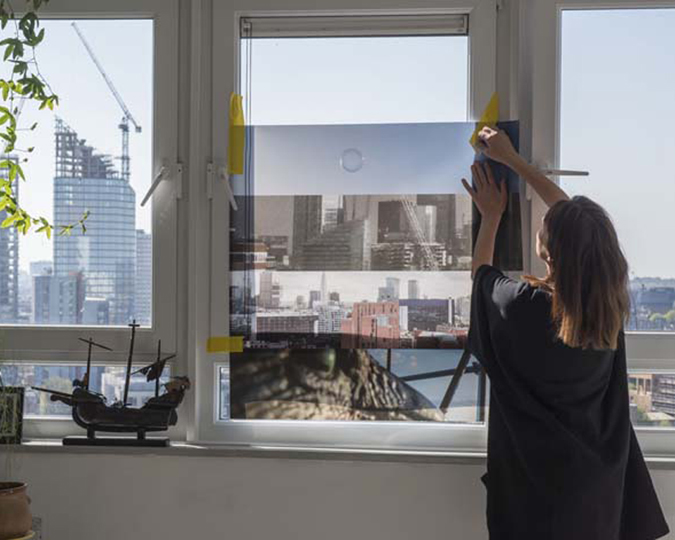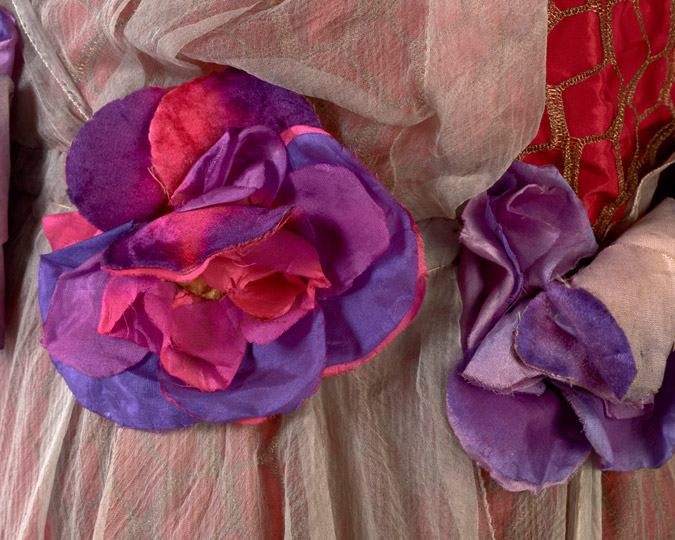This article contains images of nudity.
Our summer 2016 exhibition Stomping Grounds: Photographs by Dick Scott-Stewart displayed photographs recently donated to the museum by the Dick Scott-Stewart Archive. Exhibition curator Anna Sparham shares her thoughts on the extraordinary variety of subcultures and scenes on display.
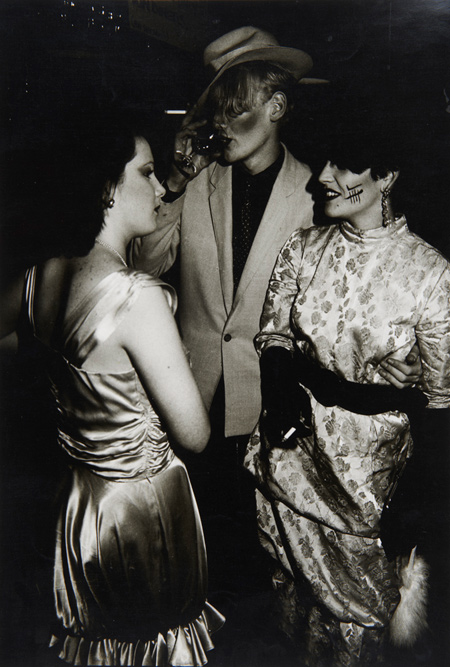
Trio in the Blitz club, 1981
© Dick Scott-Stewart Archive/Museum of London; ID no. IN9715.1
I was born in 1979. I have fond memories of early childhood
dancing to a jumble of tracks from the seventies and eighties, thanks to my
parents’ eclectic tastes in music, their wonderful mixtapes recorded from the
radio’s Top 40 charts and, of course, Top
of the Pops.
So when I first encountered some of the photographs Dick Scott-Stewart made of the period, I naturally brought these recollections to them. We all connect with images via our own experiences. With these particular photographs, my own experiences are of course limited, given that I was still in pre-school. I can’t pretend to know what it was like to hang out on the King’s Road in a safety-pinned t-shirt and mohican, or to throw shapes on the dance floor of the Blitz club (a mild obsession, aged 4, with Boy George and Culture Club’s Karma Chameleon doesn’t count).
But I can begin to relate to these photographs when I recall my own adolescence. I do know what it felt like to escape into music; the thrill of discovering the new and old. I do know how it felt to experiment with a style of dress that moved against mainstream fashion. (Mistakes were made.) I know how it is trying hard to be part of a scene and how significant that feeling of belonging is in your formative years. This is what fascinated Dick Scott-Stewart when he turned his camera on youth subculture.
On a surface level, the choice of clothes, make-up, tattoos and hairstyles make for intriguing subjects to photograph. But beyond this, it is the social attitudes and behaviours on show which really captivated first Scott-Stewart, and in turn myself and all those who view his work.
Let's start with the Rockabilly photographs...
Their checked shirts, boots, jeans and hair all conform to the revival Rockabilly look at that time. Scott-Stewart had earlier met several Rockabillies in another pub at St. George’s Circus and had begun to get to know how they socialised and where they hung out.
"Attitude” is synonymous with youth subculture, expressed through appearance, body language and behaviour. Here the central figure is dramatically playing up to the camera. He appears to have dropped or possibly thrown down his pint on the floor, leaving an ambiguous stain on the paving stones below. Rendered in monochrome, this could almost be blood, adding to the energy of the scene, the undercurrent of violence. The laughing Rockabilly to the right softens the tone again, to present a scene which brilliantly conveys adolescent immaturity. In this instance the supposed threat of violence is all role-play, pumped up for the camera. This doesn’t take away from the realism of the shot. Had the boys been truly fighting this would have been an interesting documentary record. Capturing them effectively play-fighting is just as valid in reflecting the behaviour of the group.
Scott-Stewart enjoyed interacting with people. In an interview for SLR Magazine, April 1983, speaking with the Creative Camera editor Peter Turner, Scott-Stewart said
I'm a 6ft 2 voyeur. I love looking at things. Photography is just an excuse to meet interesting people. It is a passport to situations that I like to be involved in.
For the time span of the photographs in this exhibition, he would have been in his early thirties. Sadly, Scott-Stewart died in 2002, aged only 54. Those who knew him are quick to comment on his humorous and self-effacing nature. This modesty is one reason why his work is not better known.
His photographs show that his subjects are often conscious of his presence. An engagement with people often really comes through, as does his empathy for the subjects. Scott-Stewart related most strongly to those he saw as facing certain struggles in life; who lived on the periphery. His images of youth subculture reflect how individuals congregate, survive in their groups and strive to move against the tide of the mainstream. Further photographs in this exhibition are united by this thread of marginality.
This cross-dresser isn’t presented in a sensationalised or over-dramatic manner. The relaxed pose and the backstage context implies ease with the photographer, reflecting Scott-Stewart’s personable and sociable nature.
Sometimes his photographs are more surreptitiously shot. His images of strippers document both the environment in which they are performing and the vulnerability of the situation. This is accentuated through Scott-Stewart’s play with voyeurism and multiple viewers – the photographer photographing a man, photographing a stripper, no doubt surrounded by an attentive crowd.
As a freelance documentary photographer, alongside his commissioned work, Scott-Stewart would independently seek out photo stories which had the potential to turn into features for magazines or newspapers. In 1974 he published a book ‘Fairground Snaps’ bringing together much work he had produced over a long term project. These images now reside at the National Fairground Archive.
He had intended to create a book of his project on the wrestling at Battersea Town Hall. As part of the donation to the museum we acquired the handmade folio that Scott-Stewart assembled of these photographs. The exhibition showcases both the folio itself, and a number of the images within panned across a large projected screen. Like many people of his generation he had enjoyed watching the wrestling on Saturday afternoon television. The entertaining pantomime that the sport offered appealed to Scott-Stewart’s humour and photographer's eye. He and his friends would regularly go and enjoy the show at Battersea.
He photographed the wrestlers themselves in situ, allowing their theatrical costumes and poses to dominate the images. He then turned the camera to the ‘fans and groupies’ and the attentive and interactive audience. I love these photographs for their eccentricity, warmth and their power to transport you to the drama of the event. There is a definite sense of escapism here and, again, recognition of the strength of collective belonging.
The collection donated by the Dick Scott-Stewart Archive to the museum – 117 photographs plus the wrestling folio – extends beyond the subjects shown in the exhibition. In selecting for the show, I wanted to display some of Scott-Stewart’s strongest work together with that which best represented his enthusiasm, approach and interests. Another common theme of the collection overall is the notion of performance. From the New Romantics to the Rockabillies, from the strippers to the jive dancers, all were performing either to the camera or to those around them. ‘Performance’ appears to go hand in hand with the other reasons these subjects intrigued Scott-Stewart. The groups of photographs shown in the exhibition complement each other by being given a wider context.
I hope Stomping Grounds celebrates and teases out the many social scenes of London during the late seventies and early eighties. I hope it also brings deserved attention to Scott-Stewart’s achievements in making these photographs for future generations to ponder and delight in.
You can buy prints of Dick Scott-Stewart's photographs from the Museum of London online print shop.
Love photography? Subscribe to our free photography newsletter to read more stories from our collections, and see upcoming events and exhibitions.








